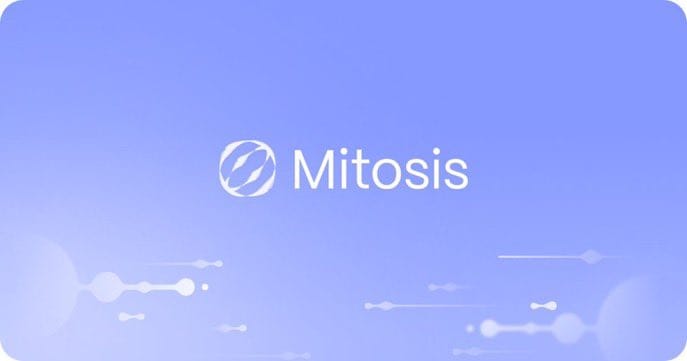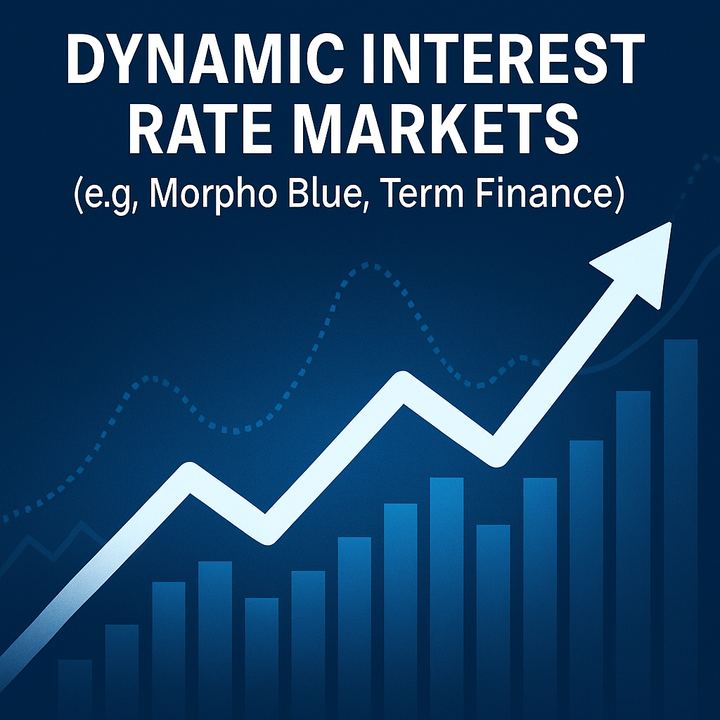FIFA's Web3 Play: Partnering with Avalanche for a Custom Blockchain and the Role of Unified Liquidity
Overview: The Intersection of Global Sports and Decentralized Technology
The world of sports, particularly football, commands an unparalleled global audience and passionate fan base. As digital transformation accelerates, major organizations like FIFA are exploring innovative ways to deepen fan engagement and create new value. This article delves into FIFA's groundbreaking partnership with Avalanche, a leading blockchain platform, to launch a custom blockchain. We will analyze the strategic implications of this move, the technical advantages of Avalanche's Subnet technology, and critically, how the Mitosis protocol – a pioneer in unified cross-chain liquidity – could play a pivotal role in maximizing the potential and reach of FIFA's digital assets within the broader Web3 ecosystem.
Introduction: FIFA's Bold Leap into Web3
The Fédération Internationale de Football Association (FIFA), the global governing body of football, is making a significant stride into the decentralized digital realm. In a landmark announcement, FIFA has partnered with Avalanche, a prominent Layer 1 blockchain, to develop and launch its own custom blockchain. This strategic collaboration signals a clear intent from one of the world's largest sports organizations to embrace Web3 technologies, moving beyond mere licensing deals to building foundational digital infrastructure. This initiative aims to revolutionize fan interaction, digital collectibles, and potentially new revenue streams for the sport.
FIFA's Web3 Ambitions: Beyond Traditional Engagement
FIFA's foray into Web3 is driven by a desire to evolve its relationship with fans and unlock new economic models. Traditional fan engagement often involves merchandise and broadcast rights, but the digital age offers unprecedented opportunities for direct interaction and ownership. By launching a custom blockchain, FIFA can issue official digital collectibles (NFTs), fan tokens, and potentially integrate blockchain into ticketing or gaming experiences. This move positions FIFA at the forefront of sports innovation, aiming to create deeper, more immersive, and verifiable connections with its global audience.
Why Avalanche? The Power of Customizable Subnets
FIFA's choice of Avalanche as its blockchain partner is highly strategic, largely due to Avalanche's unique Subnet architecture. Unlike monolithic blockchains, Avalanche allows entities to launch application-specific blockchains, known as Subnets, that are fully customizable. These Subnets can have their own tokenomics, consensus mechanisms, and virtual machines, offering unparalleled flexibility, scalability, and predictable transaction fees. For an organization like FIFA, a custom blockchain on Avalanche provides the dedicated infrastructure needed to handle high transaction volumes without being affected by congestion on the main network.
The Custom FIFA Blockchain: A Digital Stadium
The custom FIFA blockchain on Avalanche is envisioned as a "digital stadium" for football fans worldwide. Its primary functions are expected to include the issuance and management of official FIFA NFTs, which could range from iconic moments and player cards to exclusive fan art. Beyond collectibles, the blockchain could facilitate secure and verifiable digital ticketing, fan loyalty programs, and even serve as a backbone for blockchain-powered gaming experiences. This dedicated chain ensures that FIFA maintains full control over its digital ecosystem, providing a branded and secure environment for its users.
Benefits for FIFA and Fans: A New Era of Ownership
This partnership offers multifaceted benefits. For FIFA, it opens up significant new revenue streams through the sale of digital assets and direct fan engagement, bypassing traditional intermediaries. It also provides a powerful tool for brand building and fostering a more loyal and interactive global community. For fans, the benefits are equally compelling: true digital ownership of collectibles, verifiable authenticity, and potentially new ways to participate in the sport they love, moving beyond passive consumption to active participation and investment in their passion.
How might the launch of a custom FIFA blockchain on Avalanche redefine the concept of fan loyalty and engagement in the sports industry?
Challenges and Considerations: Navigating the Web3 Landscape
Despite the immense potential, FIFA's venture into Web3 comes with its share of challenges. The primary hurdle will be achieving widespread adoption among a global fan base, many of whom are not yet familiar with blockchain technology. User experience (UX) must be seamless and intuitive, abstracting away the complexities of wallets and transactions. Regulatory uncertainty surrounding digital assets and NFTs across different jurisdictions also poses a significant challenge. FIFA will need to carefully navigate these complexities to ensure a successful and inclusive rollout.
Liquidity Fragmentation: The Unseen Barrier in Web3 Ecosystems
As FIFA launches its custom blockchain, it will inevitably encounter a pervasive issue in the broader Web3 landscape: liquidity fragmentation. Even with a dedicated Subnet, FIFA's digital assets could remain isolated within its specific chain, limiting their reach and utility across the wider multi-chain ecosystem. This fragmentation hinders the seamless flow of capital and assets, leading to inefficiencies and reduced market depth for digital collectibles and fan tokens. Addressing this challenge is crucial for maximizing the value and accessibility of FIFA's digital offerings.
Introducing Mitosis Protocol: Unifying Cross-Chain Liquidity
This is where the Mitosis protocol enters the picture. Mitosis is a pioneering Layer 1 blockchain specifically designed to serve as a dedicated liquidity layer for the entire Web3 space. Its core innovation lies in the concept of Ecosystem-Owned Liquidity (EOL), which aims to create a sustainable, community-managed pool of capital accessible across diverse blockchain environments. This approach seeks to overcome the limitations of traditional, fragmented liquidity models by incentivizing long-term liquidity provision and aligning it with the collective interests of the ecosystem.
The Mitosis Vault System: A Foundation for Sustainable EOL
Central to the Mitosis protocol is the innovative Mitosis Vault system. Users deposit assets into these vaults on various chains, becoming liquidity providers and receiving miAssets in return. These miAssets are canonical, 1:1 representations of the deposited assets within the Mitosis ecosystem. The creation and fungibility of miAssets are critical steps in enabling seamless cross-chain liquidity, allowing assets to flow freely.
DAO Governance: Community-Driven Liquidity Allocation
The Mitosis protocol operates under a decentralized governance model, specifically a Mitosis DAO. Holders of miAssetsare granted voting rights within this DAO, empowering them to participate in key decisions regarding the protocol's development and, crucially, the allocation and management of the pooled liquidity within the Mitosis Vaults. This community-driven approach ensures that the liquidity is directed in a manner that best serves the collective interests of the ecosystem.
How could the Mitosis protocol's Ecosystem-Owned Liquidity (EOL) model specifically benefit the liquidity and accessibility of FIFA's digital assets?
Interoperability: The Secure Bridges of Unified Liquidity
To facilitate the seamless and secure movement of miAssets across different blockchain environments, Mitosis leverages robust and secure interoperability protocols. Protocols like Morse and Hyperlane provide the underlying infrastructure for secure cross-chain messaging and asset transfers. This ensures that miAssets can be reliably moved between chains without compromising security or incurring excessive costs and delays often associated with traditional, less secure bridging solutions.
The Synergy: Integrating Mitosis with FIFA's Avalanche Blockchain
The integration of the Mitosis protocol with FIFA's custom Avalanche blockchain presents a powerful opportunity for synergy. While FIFA's blockchain provides the dedicated infrastructure for its digital assets, Mitosis could act as a crucial liquidity layer, connecting these assets to the wider Web3 economy. This integration would enable FIFA's digital collectibles and fan tokens to be easily transferred, traded, and utilized across various other blockchain networks, significantly enhancing their utility and market reach.
Cross-Chain Asset Flow and Enhanced Liquidity for FIFA Digital Assets
Through Mitosis, FIFA NFTs and fan tokens issued on the custom Avalanche Subnet could be represented as miAssets on other chains. This would allow fans to trade FIFA collectibles on decentralized exchanges across different ecosystems, participate in DeFi protocols with their fan tokens, or even use them as collateral. Mitosis would provide a unified liquidity pool for FIFA-related digital assets, improving trading experiences, reducing slippage, and increasing market depth beyond the confines of a single blockchain.
Fan Engagement and Rewards through Unified Liquidity
Beyond trading, the integration could unlock new dimensions of fan engagement. FIFA could explore loyalty programs where fans earn or stake miAssets for exclusive access or rewards, regardless of which chain they primarily operate on. This cross-chain flexibility, powered by Mitosis, would make FIFA's digital ecosystem more accessible and rewarding for its diverse global fan base, encouraging broader participation and deeper connection with the sport.
Future Implications for Sports, Entertainment, and Web3
The FIFA-Avalanche partnership, especially when viewed through the lens of potential Mitosis integration, has profound implications. It sets a precedent for how major global brands can leverage dedicated blockchain infrastructure for fan engagement and digital asset creation. Furthermore, it highlights the increasing necessity of unified liquidity solutions to prevent digital assets from becoming siloed. This collaboration could inspire other sports leagues, entertainment giants, and even traditional industries to explore similar Web3 strategies, driving mainstream adoption and demonstrating the power of interconnected decentralized ecosystems.
Conclusion: A Unified, Global Digital Football Experience
FIFA's partnership with Avalanche to launch a custom blockchain marks a pivotal moment in the convergence of global sports and Web3 technology. This move promises to revolutionize fan engagement and unlock new digital economies for football. Crucially, the potential integration with a protocol like Mitosis could elevate this initiative from a chain-specific endeavor to a truly cross-chain phenomenon. By providing a unified liquidity layer, Mitosis could ensure that FIFA's digital assets are not only secure and verifiable but also seamlessly tradable and usable across the entire decentralized landscape, creating a truly global and interconnected digital football experience for millions of fans worldwide.
Reflect and Discuss:
- What are the primary technical challenges FIFA and Avalanche might face in ensuring a smooth and user-friendly experience for non-crypto native football fans on the new custom blockchain?
- How could the Mitosis protocol specifically help FIFA manage the potential volatility of its digital assets by providing deeper and more stable liquidity pools?
- Beyond NFTs and fan tokens, what other innovative applications or services could FIFA launch on its Avalanche Subnet that would benefit from unified liquidity provided by Mitosis?
- What are the long-term implications for the broader sports industry if FIFA's blockchain strategy, enhanced by cross-chain liquidity, proves to be highly successful?
- How might the success of this partnership influence other global entertainment brands to adopt similar blockchain and unified liquidity solutions in the future?


Comments ()